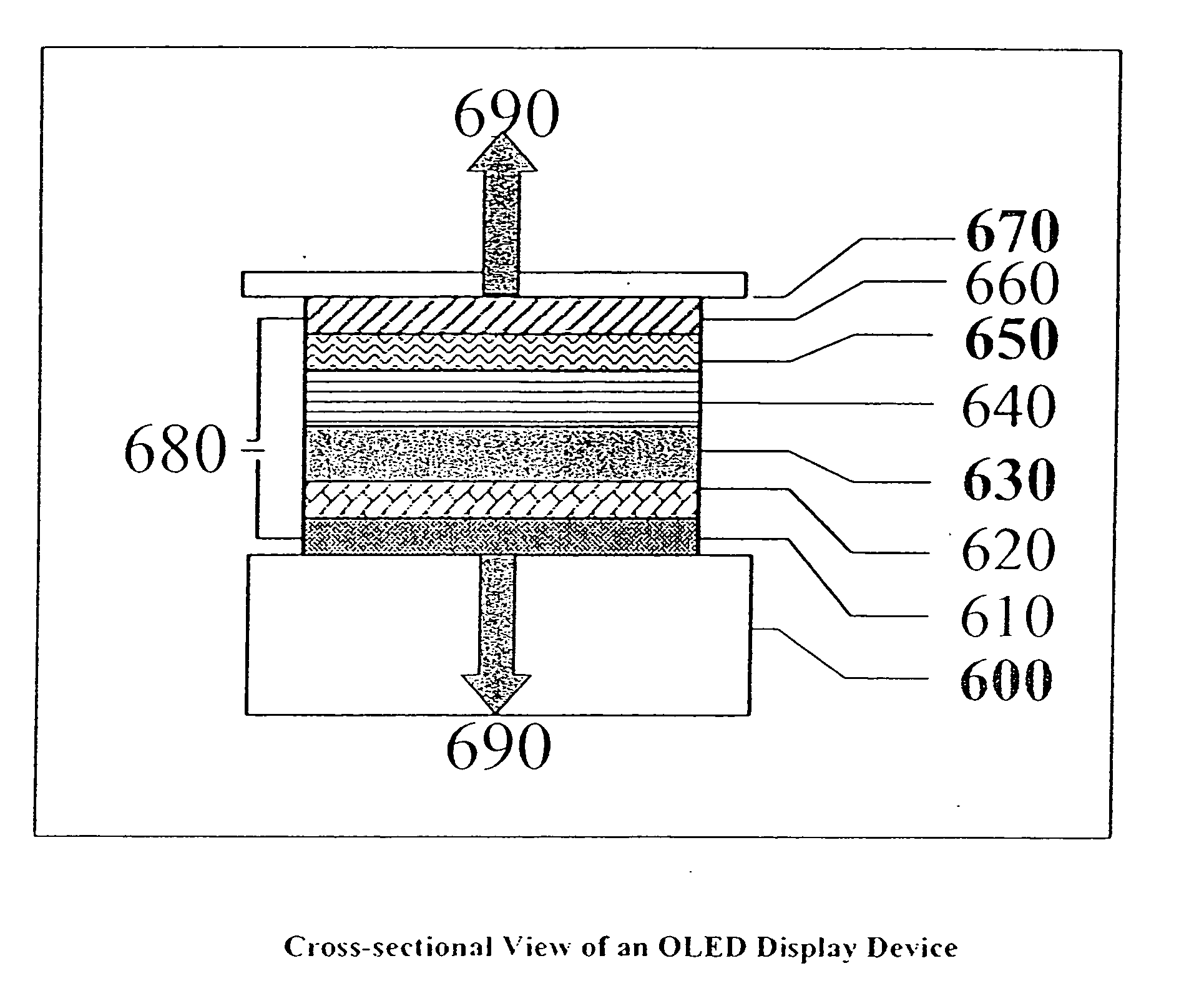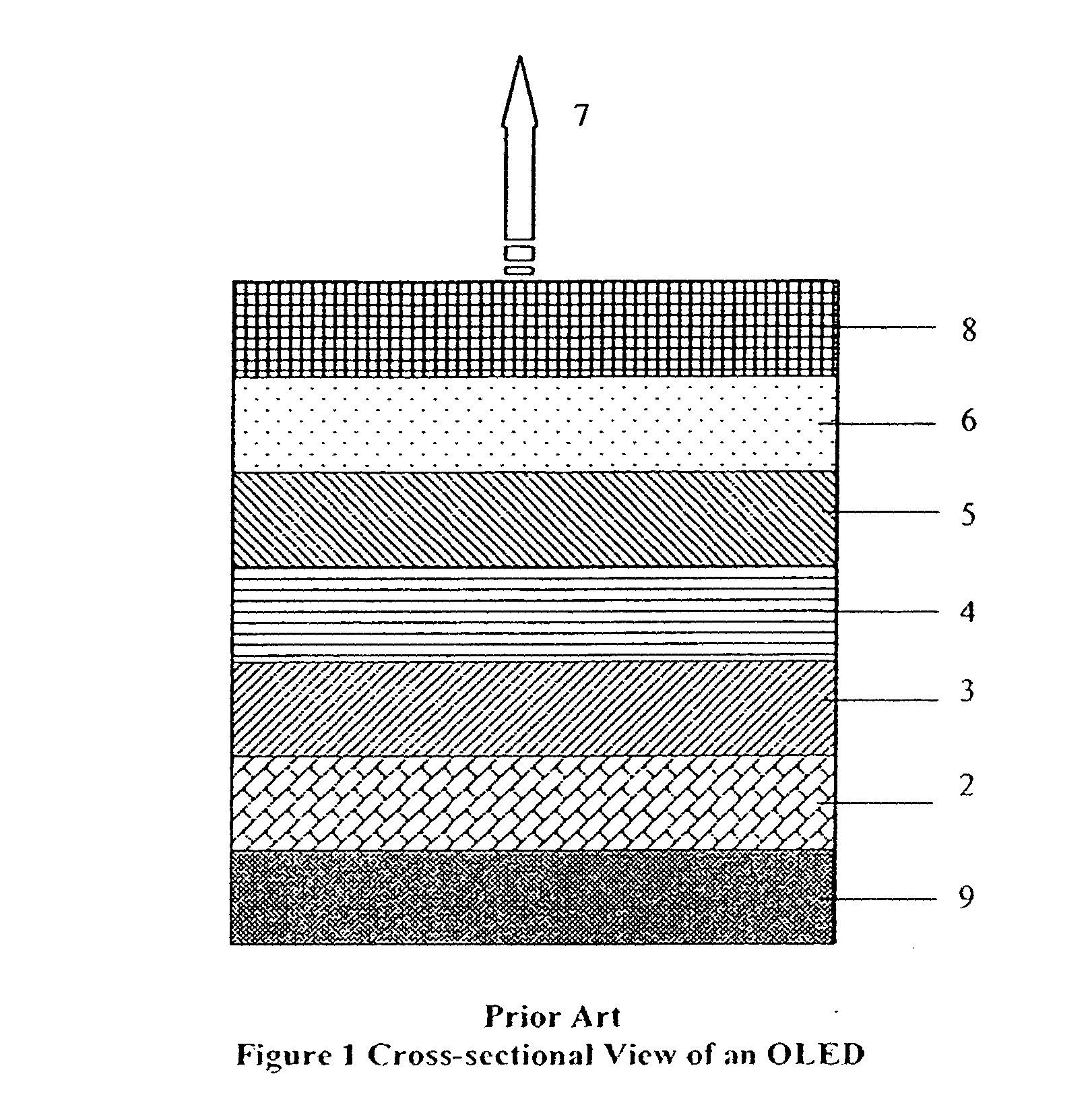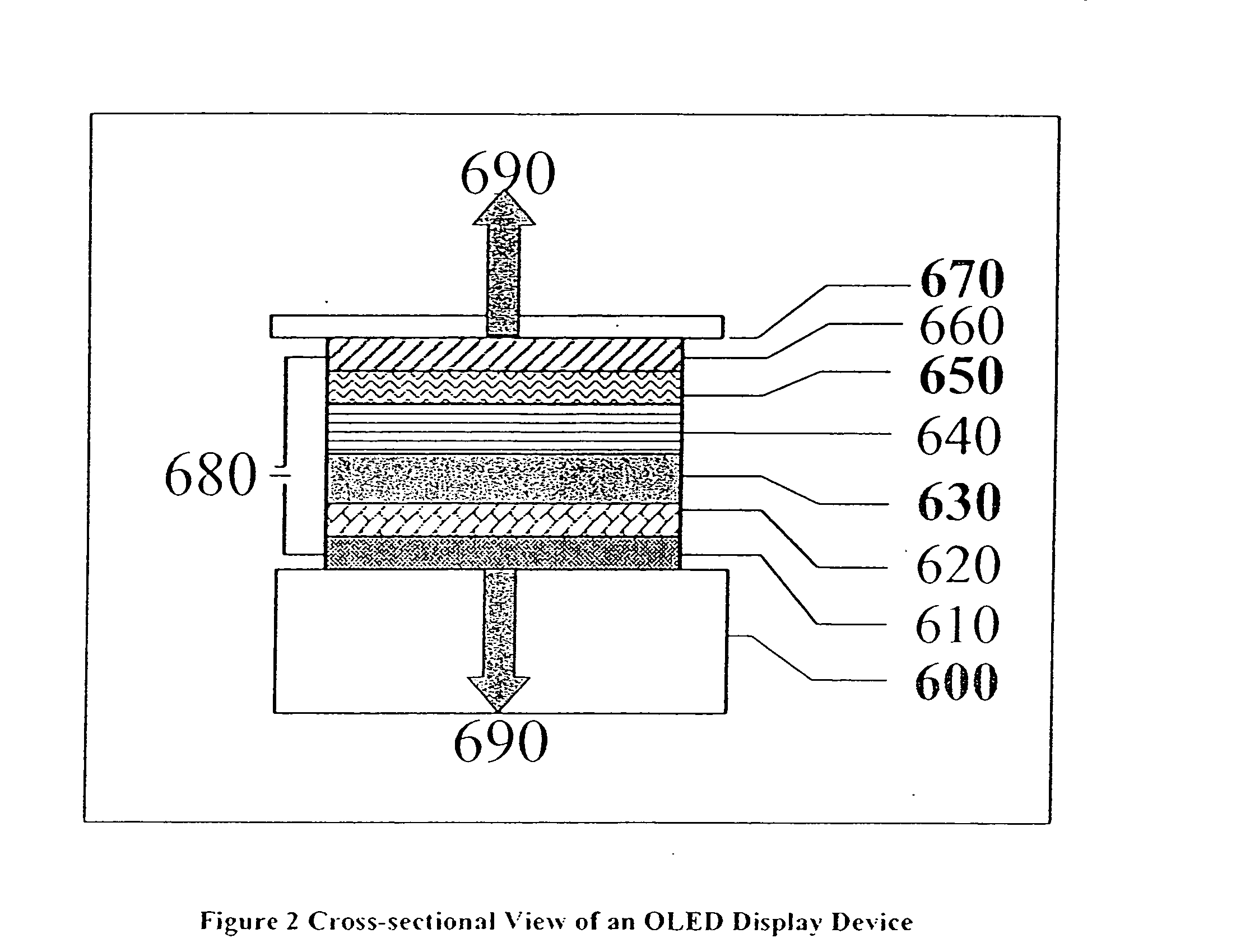Method for manufacturing a display device with low temperature diamond coatings
a technology of diamond coating and display device, which is applied in the direction of semiconductor devices, organic semiconductor devices, electrical apparatus, etc., can solve the problems of long-term stability problems, high cost, and high cost, and achieves faster operation, high power, and heat-tolerant
- Summary
- Abstract
- Description
- Claims
- Application Information
AI Technical Summary
Benefits of technology
Problems solved by technology
Method used
Image
Examples
Embodiment Construction
[0045] The present invention relates to an innovative method of fabricating a bi-directional OLED display device with multiple diamond layers deposited by a chemical vapor transport process at temperatures below 750° C. that would significantly increase the light conversion efficiencies and long term reliability and that can be manufactured in a continuous process.
[0046] The performance of OLEDs in display devices has been known to be highly susceptible to degradation by moisture and oxygen. For this reason, it is necessary to limit or control the amount of moisture the organic materials are exposed to, usually by encapsulating the diodes within a metal can or by sandwiching with another glass substrate containing a drying substance, thereby ensuring the continued performance of the OLED as a display. This invention provides for an OLED with transparent thin film encapsulation formed by the low-temperature deposition of diamond onto either a transparent or opaque cathode or anode c...
PUM
| Property | Measurement | Unit |
|---|---|---|
| temperature | aaaaa | aaaaa |
| temperatures | aaaaa | aaaaa |
| dielectric constant | aaaaa | aaaaa |
Abstract
Description
Claims
Application Information
 Login to View More
Login to View More - R&D
- Intellectual Property
- Life Sciences
- Materials
- Tech Scout
- Unparalleled Data Quality
- Higher Quality Content
- 60% Fewer Hallucinations
Browse by: Latest US Patents, China's latest patents, Technical Efficacy Thesaurus, Application Domain, Technology Topic, Popular Technical Reports.
© 2025 PatSnap. All rights reserved.Legal|Privacy policy|Modern Slavery Act Transparency Statement|Sitemap|About US| Contact US: help@patsnap.com



